A documentary exploring a solution to overfishing
FISHING FOR THE FUTURE
What is the solution to overfishing? Small-scale, ethically conscious fishing is typically seen as no longer financially viable, but Nate Smith’s Aotearoa New Zealand-based Gravity Fishing business is directly tackling the effects of overfishing. With sustainable fishing practices that are also financially viable and use the most humane way to kill a fish – ikijeme – it’s a model Nate hopes to replicate to make sustainable commercial fishing viable for all coastal communities.
Nate’s artisanal fishing is seasonal and based on ethical fishing practices that are deeply respectful of the ocean ecosystem. By fishing seasonally, the aim is to harvest fish when they are both abundant and healthy, which also happens to be when they are the best tasting fish.
We’re excited to share this story offering hope for the future of local fisheries. We hope you’ll be as inspired by it as we are!
Click the play button above to watch a snippet from ‘Fishing for the Future’ documentary.
[00:00:20] Nate: Most New Zealanders can’t afford to go and have a piece of kai moana [seafood] from the supermarkets. You know, it’s too expensive. It’s old. The quality is poor. There’s no story to it. It’s just kind of hollow. We are a Pacific Island nation surrounded by seawater, and the hardest thing to get our hands on is kai moana.
[00:01:00] Radio: Bluff Fisherman’s Radio, Gravity, copy.
Nate: Yeah, morning, Mary. We’re just leaving the harbour and we are heading over to Half Moon Bay.
Radio: Good as gold. I’ll keep a close ear for you and catch you when you’re ready. Okay?
Yeah, beauty. Thanks Mary.
[00:01:20] Nate: When I first started fishing and I was running my own boat. We were using industrial methods of fishing. Mainly pot fishing. We were doing really well, sort of averaging about 750 to 800 kilograms of whole fish a day. And then over time I just kind of started to see how devastating it was on the fish stocks.
And I think that’s probably one thing that humans need to look at themselves as you know, over time we’ve become super efficient at it, but it just puts so much pressure in such a short amount of time on a wild food resource like fish. But it just didn’t sit well with us. And the answer was just to take less fish. It just made sense to go direct to market.
[00:02:10] Nate: So we’re using hand lines today to catch our fish. It’s easier to manage when you’re fishing by yourself or if you’ve got one other on the boat. This is a pretty modest setup. It’s just a little bit of rope and some lead weights and some hooks onto the rope. You know, you don’t need all the expensive flash gear.
Our mission was to try and give back to the wild fish stocks that have been giving for so many years. From a financial perspective, if we were fishing for the bigger companies for blue cod, we’d be achieving between $3.50 a kilogram to $5 a kilo, and with our structure selling whole and catching fish with hook and line, we’re achieving 20 to $22.50 a kilo, so it’s, you know, four times better off money, which means we can afford to take four times less fish. It was just an absolute no-brainer for us.
It is really sustainable to fish like this because there’s only a certain amount of hooks that you’re putting in the water, which means you are minimising the amount of fish that you can harvest, as opposed to say, a trawl net, where you don’t really have a gauge on that. It’s just whatever you trawl up in the process. This way, it’s just selecting a few fish that we’re after for the orders that we’ve got. The methods of fishing that we’re using with hook and line, it’s less stressful than if they’re all trapped in a cage or all trapped and drowning in a net.
[00:03:25] Nate: We’re not taking one species out all year round. We’re only ever dedicating our time and effort into that space when the fish are in season. So when it’s of, you know, best nutritional value for us to be consuming as humans. When you are bulk harvesting, you can’t look after the fish as well as you would if you’re doing it on a small scale.
You know, the chefs get it and they have that appreciation for it, so then they honour the product as well. I mean, they always kind of say to me, it’s easy to cook this product because it’s so beautiful when we get it. There’s a reason why it is beautiful, and it’s because we are connected to it in a deep way.
[00:04:05] We use an ancient Japanese technique called ikejme on the boat. For most fish, it’s that first gill plate that goes up into the brain cavity, into there, and then just give it a wee twist, and that’s it. It’s the most humane way to kill a fish and to honour that fish as well. At the end of the day, you are taking a life to feed another. I think it’s important, you know, if you are deeply connected to that space, to kind of honour it in that way, and it’s an intimate connection that I have for those few seconds before I take its life. It’s like kind of calm and peaceful. It kills it straight away. To give you a timeframe, it’s under five minutes from the time that that fish is hooked till the time I haul it to the surface till the time I put it on our mattress and ikejime it.
[00:04:55] Nate: Most of the time it just comes to you in a cardboard box and it’s already filleted and you don’t really know or understand the wastage that goes with that. For blue cod, for example, it’s 1.6 kilos to get one kilo of boneless fillets. So ultimately off every ton of fish, you’re throwing 1600kgs of fish over the sides. It’s a massive waste and that’s why we do whole fish. It just kind of ticks all the boxes with what we believe in.
[00:05:20] Nate: We only catch to order. How that works is we’ll send out a bulk email to all of our customers. We let them know specifically what species of fish we are gonna be targeting based on what season it is and then go and try and achieve those orders that we’ve got and only ever taking what those orders are. There’s no such thing as by-catch, everything that we catch on the Gravity has value.
[00:05:35] Deanna: Cod’s a really popular fish on Stewart Island. You can’t really beat Stewart Island blue cod, especially when you get it straight from the fishermen like we do with Gravity, it comes straight off their boat.
[00:06:01] Nate: In the early days for us, we were doing about three and half thousand hours of engine time on the clock. That’s not including, you know, the nights that we were sleeping away. We’ve managed to cut that down to about 700 hours a year. So it’s a considerable decrease in the time that we spend away from our family. It was sort of more a lifestyle choice for us. It was our way of giving back to the wild food resource that has given so much to myself and Anna and our families and our community as well.
We are very connected to the land as much as the sea. We are part of nature. There’s no denying it. Our sustainability and our ethical approach on the water, same deal here. Seasons are massive for us. We tune in with nature. We’ve been trying to grow as much food as we possibly can to sustain our little family.
[00:07:30] Anna: We have been at our property for around eight years. We went on a journey of trying to eat organic. And trying to grow as much food as we could so that we knew where our food was coming from and what was going in it. The children love picking food with us. My youngest, Aurora, she loves helping out in the garden. Yeah. Forest has a nickname. Forrest the Forester. His education is largely around these living life skills, like growing and harvesting food, and he has a passion for fishing like his father. Aurora seems to have a passion for the garden like me, so she’s always by my side pulling out weeds and identifying plants. It’s great for us to be able to connect in that way together as well.
[00:08:50] Nate: We sort of realised that just us doing what we did kind of wasn’t enough. The issue was bigger than what we thought it was. Now our steps are to just kind of make all of that knowledge that we’ve accumulated along the way available for other fishers. So we’re on a bit of a path at the moment. We’ve applied for some funding to set up infrastructure for different regions around New Zealand. So that the fishers in those regions can then feed their communities.
There’s only a handful of artisanal fishers left. So yeah. What we are trying to achieve at the moment is empowering those small scale fishers who wanna feed their communities. We make it really, really easy. We’ve taken all of that hard work out of it. The infrastructure will be built down here in Southland. The ice making machines and stuff like that all goes with the chiller unit.
We pack our fish in zero degrees to minimise the chance of bacteria. These units will show up in your region. They’ve got quota with them, so you don’t have to go out and outsource quota. You basically just have to have a registered fishing vessel and a QRN number. And you can go to sea and catch a small amount of fish, put it up on our ordering platform, and by the time you dock your boat and tie up the money’s in your bank.
This is about giving the power back to the harvesters, letting them tell their story as individuals, so not smothering them and saying, oh, they fish for Gravity, or whatever. Everybody who chooses to adopt this method and use this packing facility, it still remains their own separate entity. It’s not about franchising and going big or go home, it’s about empowering lots of little communities and lots of little businesses to shine their own light, you know, to paddle their own waka [boat].
[00:11:10] Mish: I’ve been asked over the years, “Mish, where can we buy some paua? Where can we get some kina?” And to be quite honest, I’ve not known the answer to that. You know, it’s just like, well, you should be able to go to the market and get it. We’ve started to explore the options and opportunities, how we can do that, and then entered Nate, here’s the opportunity. “We want to do this, are you interested?” And it was just like, shit, yeah, we’re interested, man.
At Sealective, we’re actually just harvesting three species at the moment, which is the butter fish that’s hand-speared and it’s all breath hold as well. And then you’ve got the paua and then the kina.
[00:12:30] Nate: When we first started this, we were unsure if we were gonna get the funding approved or not. So I’m pretty happy to say that we have actually secured the funding through SFFF and MPI.
In the North Island we’ve got Mish who’s taken it on board. He’s been absolutely epic to deal with, his enthusiasm and energy about the whole thing is mammoth. He’s been in this industry for a really long time. To get the physical infrastructure here and to, you know, get phone calls and messages from Mish saying, you know, “Whoa, it’s here man. It’s, it’s happening”, was just, you know, another level of confidence for me moving forward with this thing.
I believe with everything within me that this is the right way to go about it. By scaling everything back and creating lots of little job opportunities for people. When you on-sell that, you might be able to sell it to somebody else down the road who fillets it or they might smoke it, somebody might can it or bottle it or pickle it. The possibilities are endless.
[00:13:50] Nate: This thing has to be led from this way of thinking for people who are deeply connected with the kai moana and the environment, the people that want to give back and protect and preserve it for future generations as opposed to just extract and get your money and go home at the end of the week.
[00:14:14] Mish: What Nate’s doing and what MPI are doing right now, they’re giving us the opportunity to be able to actually roll with all the big dogs and set up without all of these huge hurdles. They’re making the opportunity a lot more practical, and that’s what needs to happen because there are so many young cats out there, so many capable people that are a hundred percent able to do what we do. But it’s just the red tape and the financial cost, the financial burden. Now we’ve got this platform through Nate that he’s rolling out with MPI, that we can actually get it out to the consumers. It can be received by New Zealanders, in New Zealand.
[00:15:12] Nate: My vision for this thing is to give the fish back to the people. When I say people, I mean the 5 million people that live here in New Zealand. For so long it’s been shipped offshore. My intention was to restore regional community access. This is what we once had. There were little fishing ports all over this whole country, and that’s, you know, been lost over the years because of the way the system’s geared.
Best case scenario is we can prove, not just to, you know, our regulators here in New Zealand, but to the rest of the world, that what we are doing is more sustainable and more ethical than kind of anything that’s come to pass. It’s creating job opportunity right across the whole spectrum. And returning a beautiful food resource back to the community, not shipping it offshore, and getting people to understand that it’s a precious resource that needs looking after.
Is the Gravity Fishing model a solution to overfishing?
- Most New Zealanders don’t get to buy quality seafood because it’s shipped offshore. This is a model that could bring kai moana (seafood) back into connection with the local market.
- This style of fishing sees fishers spending less time on the water, taking fewer fish from the sea, only catching in-season fish, and earning better money. “It’s a no-brainer!”
- Ikejime is used to kill each fish humanely by hand, creating a connection between the fisher and the fish and honouring the fish’s life.
- The government-funded model enables individuals who own a boat and have a QRN number to fish to order for their community. It comes with quota and they have access to an ordering platform for customers.
- If there were fishers in every coastal town fishing this way once again, industrial fishing would become redundant, our fish populations would thrive instead of dwindling, and those of us who choose to eat fish would have access to high quality fresh fish again.
“My vision is to give the fish back to the people. When I say people, I mean the 5 million people that live here in New Zealand. For so long it’s been shipped offshore. My intention was to restore regional community access. This is what we once had. There were little fishing ports all over this whole country, and that’s been lost over the years because of the way the system’s geared.”
– Nate Smith, Gravity Fishing
People featured in 'Fishing for the Future' film
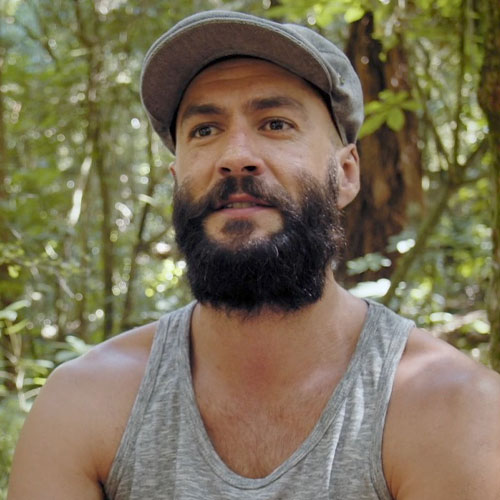
Nate Smith, Gravity Fishing
Nate grew up in Bluff, Southland, and comes from a long line of fishermen. Initially fishing commercially for Sanford, he began his own enterprise, Gravity Fishing, in 2018 after becoming increasingly concerned by diminishing fish stocks. Through incorporating seasonal fishing and simplified fishing practices he has developed a replicable model that offers a direct solution to overfishing.
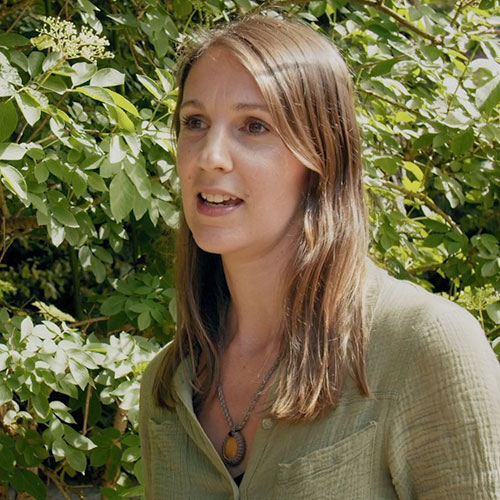
Anna Urwin, Gravity Fishing
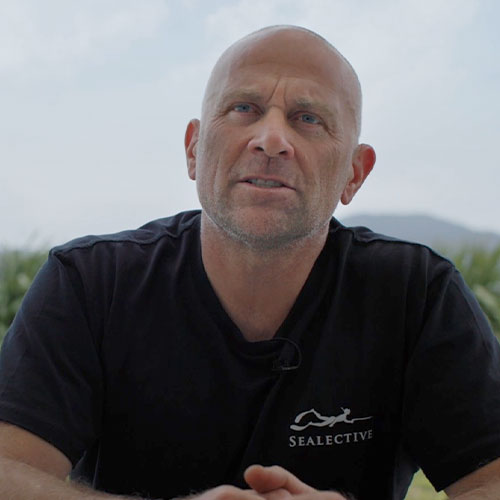
Geremy 'Mish' Foxley, Sealective
Links to resources related to the challenge of overfishing
Links related to Gravity Fishing’s solution to overfishing
- Gravity Fishing website about community-focused, sustainable fishing
- Gravity Fishing Instagram feed showing their sustainable fishing practices
- Gravity Fishing Facebook page where you can follow and connect with their journey
Links related to Sealective’s sustainable fishing operation
Other films you might like
From Weedy Forests to Grass Woodlands
On the edge of a small bushfire-prone town in Australia, a group of community-minded folk have come together to restore the ecology of their commons forest, using hand tools and goats!
Ben & bEartha: A Community's Compost Love Story
A 40-minute documentary following the highs and lows of a passionate community as they attempt to tackle the issue of food waste going to landfill.
Growing Wild Together
Take a look inside a magical 28-year-old food forest growing on 2 acres of urban land in the very south of Aotearoa New Zealand.
Why make this film about a solution to overfishing?
“Seafood plays a large part in people’s diets all over the world, and yet the large-scale industrial methods of fishing that are standard across the industry are causing devastating impacts on the health of ocean ecosystems.
“When we heard about the Gravity Fishing model providing a sustainable alternative, we wanted to share this story far and wide! We hope this film makes people question the impact of the seafood they eat and inspires fishers to adopt small-scale sustainable methods to protect and care for our precious oceans.”
– Jordan Osmond and Antoinette Wilson,
Happen Films
Help us make more films like this
Support Happen Films on PatreonWe release the majority of our films online for free so we can reach as many people as possible. But this is only achievable thanks to the supporting donations we receive: from individual viewers, aligned organisations, and like-minded philanthropists. Without that funding, we can’t make the films we know need to be made.
Supporting our work is easy through Patreon, where you can join our community of monthly contributors. If you’d like to support us, know that no amount is too small – every dollar becomes part of a fund that helps us make our next solutions-focused film.
To learn more about our approach to Community Supported Filmmaking, read the long-form blog post we wrote. Or visit the About page to learn more about us, about our ethics, and about how funds are used.
Sign-up to the Happen Films newsletter
Sign up to our newsletter to be notified about new film releases, behind-the-scenes news, and updates about all things Happen Films! (Note: We only send a newsletter out every 4–6 weeks.)

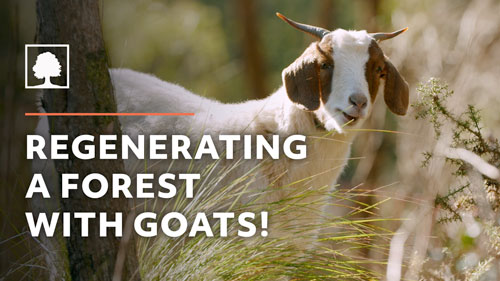

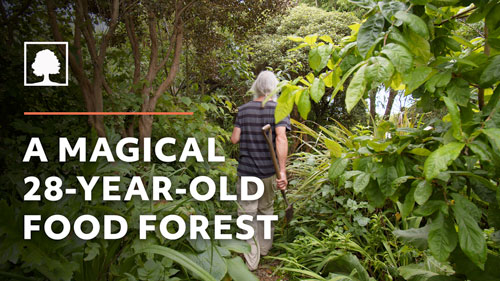
What people are saying about 'Fishing for the Future' film
“Oh WOW, simply fantastic! This is exactly how it should be done and once was done all over the world (and definitely not only with fishing). Living with and from nature without damaging nature and nevertheless having food and earning money. Thanks a lot for making teaching explaining recording editing uploading and sharing…”
– Chr.U.Cas2216, YouTube